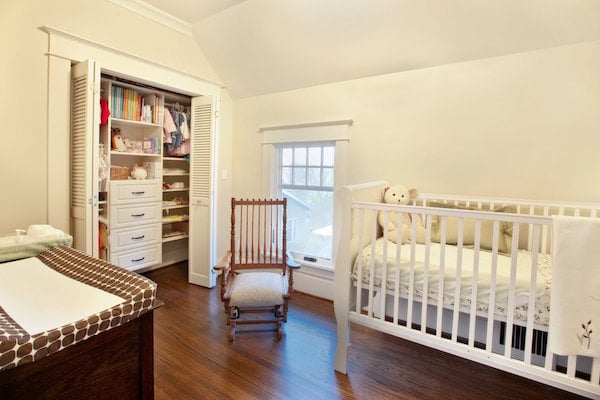
Bringing a new baby home is one of the most joyful occasions in a parent’s life. Unfortunately, one’s home can be filled with numerous dangers that can injure and even kill a baby. The risk of serious harm increases as babies learn to crawl, pull themselves up, and eventually walk. Because they are not aware of the risks around them, they are not able to avoid the dangers that threaten them. It is the responsibility of parents to create a safe environment by carefully baby-proofing the home. This is not a simple task; however, it is an important one that could potentially save the life of an innocent baby.
Preventing Injuries
Before bringing a new baby home, parents-to-be can be proactive and remove or remedy some of the dangers that commonly result in injury or even death. Securing heavy items, such as televisions, bookshelves, dressers, etc., to walls can prevent them from falling on and seriously injuring the baby. Repair or replace any furniture that is uneven or wobbly, as it can prove hazardous if a baby pulls on it or uses it for support. Make certain that throw rugs are secured to avoid slipping while carrying an infant or to prevent toddlers from slipping while they walk. Outlet covers can help stop children from sticking their fingers into outlets and can prevent accidental electrocution. Place safety gates that drill into the wall at the top of stairs to prevent babies from falling and injuring themselves. Lattice-style gates, however, should be avoided to prevent babies from getting their head stuck. When purchasing a safety gate, it should have a Juvenile Products Manufacturers Association (JPMA) certification seal. To prevent injuries from falls, soft padding or edge bumpers should be placed on the edges of the fireplace hearth and on the furniture corners. Families with firearms need to take additional safety precautions and should purchase a lockable case to store their weapons in. Firearms should be unloaded, uncocked, and kept locked within the case at all times to prevent accidents.
Materials and Substances to Avoid
There are certain materials and substances that parents will want to avoid. If avoiding them is not possible, then parents should take steps to keep them safely away from their babies at all times. Any sharp materials, such as a razor or knife, should be removed and either discarded or put in its proper location away from the baby. Check carefully on hands and knees to ensure that there are no sharp objects that can cut the baby in locations that are not readily visible to adults. Also avoid buying furniture that is made of flammable materials. If there are items in the home that are made of these types of materials, keep them away from the fireplace or any source of flame or heat. Medication should be used with care and must never be left in an area where a baby can reach up and grab it. Keep medication closed when not in use, and store it in a medicine cabinet that is too high for the baby. Chemicals and poisonous or toxic substances, such as toilet bowl and window cleaners, oven cleaners, bleach, paint thinner, dish soap, etc., should be kept in a locked cabinet, in a cabinet that is secured with a child-proof safety latch, or in a location that is elevated.
Ready to start your babyproofing project?
Find ProsRemodeling Suggestions
For some families, extra effort and even remodeling may be desired during the baby-proofing process. People may want to remove or seal paint if the home is an older one, built in 1978 or prior, as the current paint may contain lead. Hiring a qualified professional to perform a paint inspection is the most accurate way to assess whether there is lead in the paint or not. To ensure that one’s baby never encounters lead paint, which can chip and is easily consumed by an infant, homeowners may consider a remodeling project to entirely replace the wall or painted area. This will ensure that any threat of lead exposure due to the home’s paint has been eliminated. Also, check the number and location of smoke detectors in the home. If they are not currently in every bedroom and hallway, add them. If there are collectibles or small items that a baby could put in their mouth and choke on, build or add shelving that can hold them up off of the floor and out of reach. Another project would be to add anti-scald valves on pipes to eliminate the risk of burns. Mesh netting is another addition that can be added to stairs and balconies to prevent babies from crawling and falling through.
Eliminate Strangulation/Suffocation Hazards
Switch to cordless blinds or add safety tassels and inner cord stops to reduce the risk of strangulation from blind and drapery cords. In general, keep any type of cord, including telephone and electrical cords, tied up and out of the baby’s ability to reach. Whenever possible, keep these items away from the baby’s crib. To prevent a baby from suffocating in the crib, make certain that the mattress fits snugly against the crib’s sides. This will prevent the baby from getting their head stuck between the side of the crib and the mattress. To prevent a baby from strangling between the bars or slats of the crib, make sure that they are no more than 2 3/8 inches apart.
- How to Childproof Your Home
- Quick Tips Baby-Proofing Your Home
- Making Your Home Safe for Baby
- Cut and Carry Childproofing Product Checklist
- Childproofing Your Home
- Baby Safety: How to Baby-Proof Your Home
- Childproofing and Preventing Household Accidents
- Prevent Child Injuries During Home Safety Month
- Childproofing Your Home (PDF)
- Health Tip: Childproof Your Home
- From 8 to 12 Months: Safety
- Child Safety Tips: Childproof Your Home (PDF)
- NYC Dads: Childproofing Your Home
- How-To Video: Childproofing Your Home
- Child-Proofing Windows and Stairs
- Household Safety Checklist
 11 Home Security and Safety Tips
11 Home Security and Safety Tips 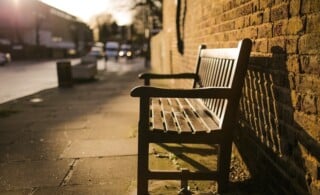 Best Cities for Sidewalks and Winter Safety
Best Cities for Sidewalks and Winter Safety 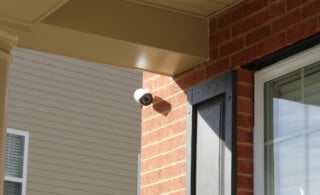 Home Motion Detectors Secure Your Safety
Home Motion Detectors Secure Your Safety 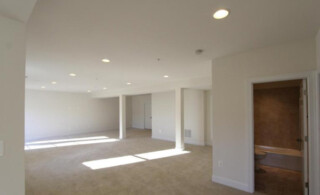 The Safe Haven of a Panic Room
The Safe Haven of a Panic Room 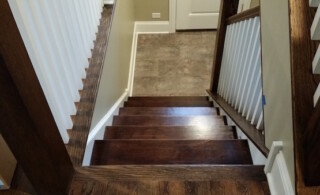 Making Your Stairs Safe
Making Your Stairs Safe 

Are You Familiar With This Topic? Share Your Experience.